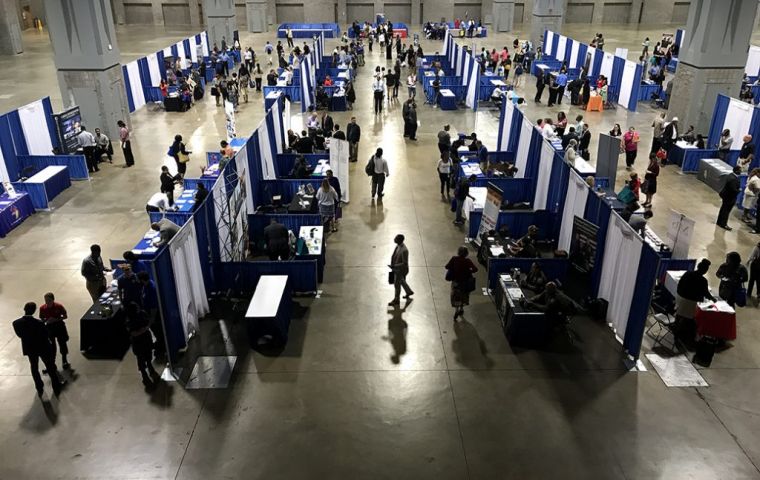MercoPress. South Atlantic News Agency
US jobs picked up in November, but the challenge remains long term employment
 There were notable gains: In transportation and warehousing (up 145,000), professional and business services (60,000 jobs), and health care (46,000 jobs)
There were notable gains: In transportation and warehousing (up 145,000), professional and business services (60,000 jobs), and health care (46,000 jobs) U.S. employers added 245,000 jobs last month and the unemployment rate slipped to 6.7%, the Department of Labor said on Friday. The fresh economic data shows the labor market clawing its way out of the pandemic-induced downturn, but still far away from a full recovery. The unemployment rate in the U.S. was 3.5% in February before the crisis hit.
“Given that we’re still 10 million jobs in the hole, ideally we’d want to see a million or 2 million people returning to work in a month,” Julia Pollak, a labor economist at jobs site ZipRecruiter, said referring to the number of jobs lost early in the pandemic that still haven't come back.
There were notable job gains last month: In transportation and warehousing (which rose by 145,000 jobs last month), professional and business services (an uptick of 60,000 jobs), and health care (which added 46,000 jobs).
”These improvements in the labor market reflect the continued resumption of economic activity that had been curtailed due to the coronavirus (COVID-19) pandemic and efforts to contain it,“ the DOL said. ”However, the pace of improvement in the labor market has moderated in recent months.”
Construction also gained a notable 27,000 jobs last month, but employment is still 279,000 jobs below its February levels.
Job losses occurred in government employment (which decreased by 99,000) and retail trade (which lost 35,000 jobs), according to the government data.
Pollak said the economy typically adds a large number of jobs in November due to seasonal hiring, but this year many positions may not be available. “We saw 18% fewer holiday job postings this year, largely just because it was such a strange year, and typically those job openings are in brick-and-mortar retail and in hospitality,” she said.
The unemployment rate for men was 6.7% in November compared to 6.1% for women, according to the government. Broken down by racial groups, it was 5.9% for white workers, 10.3% for Black workers, 8.4% for Hispanic workers and 6.7% for Asian workers.
While not accounted for in unemployment data, Pollak said women have bore the brunt of leaving the workforce amid the pandemic --an exodus largely due to school closures and disproportionate child care duties.
Approximately nine months into the crisis, Pollak said her chief concern for the recovery is long-term unemployment.
“The median length of unemployment before the crisis was nine weeks; it’s now more than 19 weeks,” she said. “I worry that the people who have been unemployed for months, since this crisis began, will have a difficult time finding jobs and the effects of that can last for years.”
People at lower income levels who were already just scraping by are the group most likely to be impacted by the new trend of long-term unemployment, Pollak added.




Top Comments
Disclaimer & comment rulesCommenting for this story is now closed.
If you have a Facebook account, become a fan and comment on our Facebook Page!